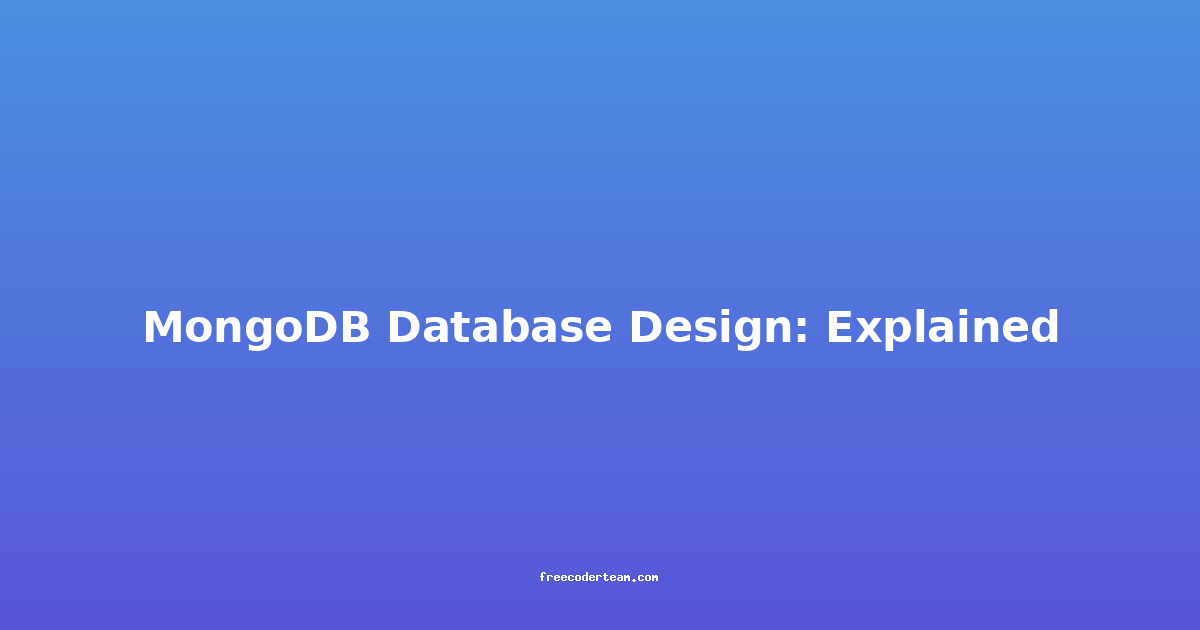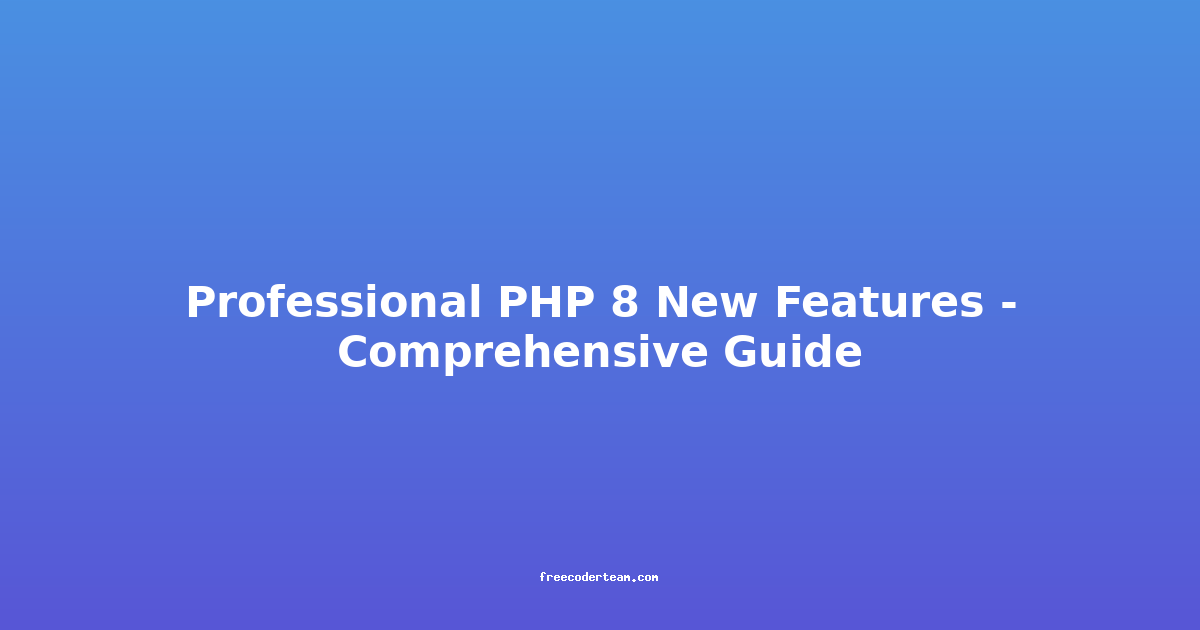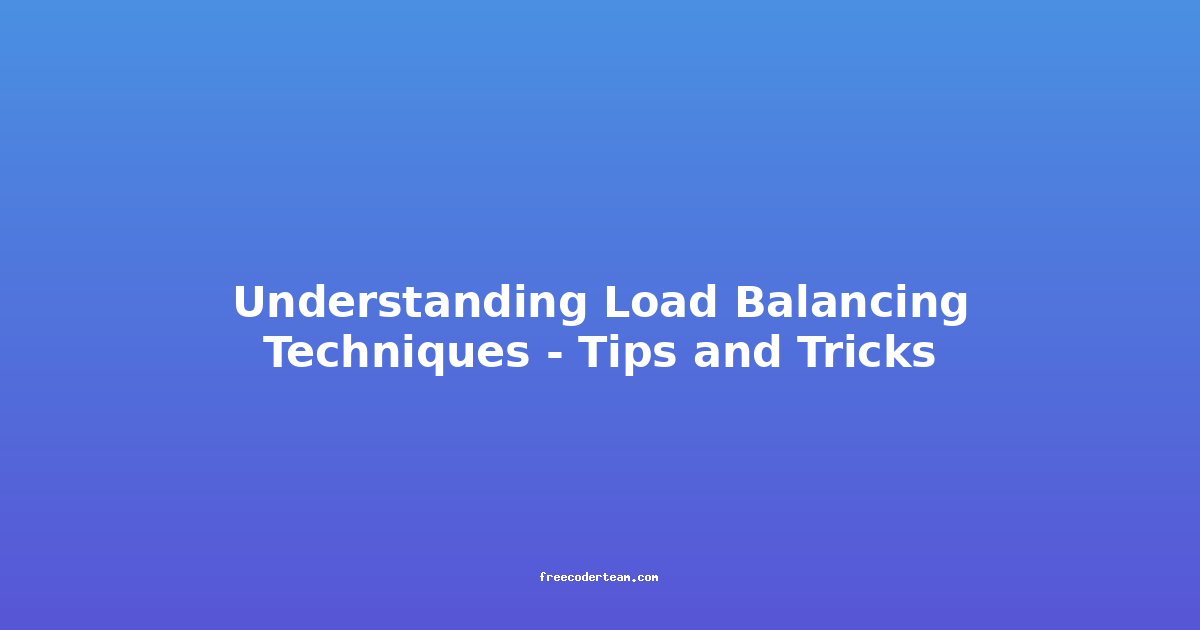MongoDB Database Design: Explained
MongoDB is a popular NoSQL database known for its flexibility, scalability, and ease of use. Unlike traditional relational databases (RDBMS), MongoDB stores data in JSON-like documents, allowing for more dynamic and adaptable data structures. However, with this flexibility comes the responsibility of designing your database effectively to ensure optimal performance, scalability, and maintainability.
In this comprehensive guide, we'll explore the key concepts of MongoDB database design, including data modeling strategies, best practices, and actionable insights. We'll also include practical examples to illustrate how to structure your MongoDB database for real-world applications.
Table of Contents
- Understanding MongoDB Data Model
- Key Concepts in MongoDB Design
- Best Practices for MongoDB Database Design
- Practical Example: Modeling an E-Commerce Application
- Actionable Insights and Tips
- Conclusion
Understanding MongoDB Data Model
MongoDB uses a document-oriented data model, where data is stored in flexible JSON-like structures called documents. These documents are grouped into collections, which are similar to tables in a relational database. However, unlike RDBMS, MongoDB does not enforce a strict schema across all documents in a collection. Instead, it allows for dynamic schema enforcement, where each document can have different fields.
This flexibility is a double-edged sword. While it empowers developers to quickly iterate and adapt to changing requirements, it also requires careful planning to avoid issues like performance bottlenecks and data inconsistency.
Key Concepts in MongoDB Design
Schema Design
In MongoDB, schema design is crucial for optimizing queries and ensuring data integrity. Unlike RDBMS, MongoDB does not require a fixed schema for all documents in a collection. However, it's still important to maintain consistency where necessary.
For example, if you're building a user management system, you might define a loose schema for your users collection:
{
"name": "John Doe",
"email": "john.doe@example.com",
"age": 30,
"address": {
"street": "123 Main St",
"city": "New York",
"zip": "10001"
},
"created_at": ISODate("2023-09-01T12:00:00Z"),
"updated_at": ISODate("2023-09-01T12:00:00Z")
}
While this document can vary slightly across users, maintaining consistency in fields like name, email, and created_at helps with querying and indexing.
Embedded vs. Reference Relationships
One of the fundamental decisions in MongoDB design is whether to embed related data directly within a document or reference it through a separate collection.
-
Embedded Relationships: Useful when related data is accessed frequently together. Embedded data ensures faster read performance since it eliminates the need for joins. For example, in an e-commerce app, you might embed
order_itemsdirectly within anorderdocument.{ "_id": ObjectId("64f63f45c828a123456789ab"), "order_id": "ORD-12345", "customer_id": ObjectId("64f63f45c828a123456789cd"), "order_items": [ { "product_id": ObjectId("64f63f45c828a123456789ef"), "quantity": 2, "price": 100.00 }, { "product_id": ObjectId("64f63f45c828a123456789gh"), "quantity": 1, "price": 50.00 } ], "total": 250.00, "status": "shipped" } -
Reference Relationships: Useful when related data is accessed less frequently or when the data is too large to embed. For example, in a blog application, comments on a post might be stored in a separate collection and referenced by the post's ID.
// Posts collection { "_id": ObjectId("64f63f45c828a123456789ab"), "title": "How to Design a MongoDB Database", "content": "...", "author_id": ObjectId("64f63f45c828a123456789cd"), "comments": [ ObjectId("64f63f45c828a123456789ef"), ObjectId("64f63f45c828a123456789gh") ] } // Comments collection { "_id": ObjectId("64f63f45c828a123456789ef"), "post_id": ObjectId("64f63f45c828a123456789ab"), "author_id": ObjectId("64f63f45c828a123456789cd"), "content": "Great article!", "created_at": ISODate("2023-09-01T12:00:00Z") }
Indexes
Indexes are critical for optimizing query performance in MongoDB. By default, MongoDB creates an index on the _id field, but you may need additional indexes for frequently queried fields.
For example, if you often search for users by their email field, you can create an index:
db.users.createIndex({ email: 1 });
This ensures that queries like db.users.findOne({ email: "john.doe@example.com" }) are faster.
Best Practices for MongoDB Database Design
Denormalization
Denormalization is a common practice in MongoDB to optimize read performance. Instead of normalizing data into multiple tables (as in RDBMS), MongoDB often embeds related data within a single document. This reduces the need for joins, which are expensive in NoSQL databases.
However, denormalization comes with trade-offs, such as increased write complexity and potential data redundancy. For example, in the e-commerce order example above, embedding order_items reduces the need for a separate collection, but updates to product prices must be propagated to all orders.
Data Partitioning
As your dataset grows, partitioning your data (sharding) becomes crucial for scalability. MongoDB allows you to shard a collection across multiple servers based on a shard key. Choosing the right shard key is critical to ensure even data distribution.
For example, if you're sharding an orders collection, you might choose customer_id as the shard key:
sh.shardCollection("ecommerce.orders", { customer_id: 1 });
This ensures that all orders for a given customer are stored on the same shard, which can improve query performance for customer-specific operations.
Scalability Considerations
MongoDB's architecture allows for horizontal scaling, where you can add more servers to handle increased load. However, designing your database with scalability in mind is essential. Key considerations include:
- Shard Keys: Choose shard keys that distribute data evenly and align with your query patterns.
- Indexing: Ensure that frequently queried fields are indexed to avoid full collection scans.
- Balanced Collections: Monitor and rebalance collections to ensure even data distribution across shards.
Practical Example: Modeling an E-Commerce Application
Let's walk through a practical example of designing a MongoDB database for an e-commerce application. We'll cover key entities like Products, Orders, and Users.
1. Products Collection
The products collection stores information about each product. Since product details are frequently accessed, we can embed attributes like price, description, and inventory.
{
"_id": ObjectId("64f63f45c828a123456789ab"),
"product_id": "PROD-12345",
"name": "Smartphone X100",
"description": "High-performance smartphone with 5G connectivity.",
"price": 899.99,
"inventory": 50,
"images": [
"https://example.com/product_images/prod12345.jpg",
"https://example.com/product_images/prod12345_2.jpg"
],
"categories": ["Electronics", "Mobile Phones"],
"created_at": ISODate("2023-09-01T12:00:00Z")
}
2. Users Collection
The users collection stores customer information. Since users are frequently queried by email, we'll create an index on the email field.
{
"_id": ObjectId("64f63f45c828a123456789cd"),
"user_id": "USR-12345",
"name": "Jane Smith",
"email": "jane.smith@example.com",
"address": {
"street": "456 Elm St",
"city": "Los Angeles",
"zip": "90001"
},
"created_at": ISODate("2023-09-01T12:00:00Z")
}
3. Orders Collection
The orders collection embeds order_items to optimize read performance for order retrieval. Each order_item references the product_id for denormalization.
{
"_id": ObjectId("64f63f45c828a123456789ef"),
"order_id": "ORD-12345",
"customer_id": ObjectId("64f63f45c828a123456789cd"),
"order_items": [
{
"product_id": ObjectId("64f63f45c828a123456789ab"),
"quantity": 2,
"price": 899.99
},
{
"product_id": ObjectId("64f63f45c828a123456789gh"),
"quantity": 1,
"price": 29.99
}
],
"total": 1829.97,
"status": "pending",
"created_at": ISODate("2023-09-01T12:00:00Z")
}
Actionable Insights and Tips
-
Start with User Stories: Begin your design by understanding how users will interact with your application. This helps define the primary use cases and query patterns.
-
Normalize for Writes, Denormalize for Reads: MongoDB excels at handling denormalized data for faster reads. However, if you frequently update data, consider balancing denormalization with indexing.
-
Monitor Query Performance: Use MongoDB's built-in tools, like
explain()and the Query Profiler, to identify slow queries and optimize them. -
Index Frequently Queried Fields: Always index fields that are used in
whereclauses,sortoperations, andgroupaggregations. -
Plan for Scalability Early: Design your shard keys and partition your data strategically to handle growth. Avoid common pitfalls like hotspots (uneven data distribution) by testing your shard key before deployment.
-
Use Aggregation Framework for Complex Queries: MongoDB's aggregation framework allows you to perform complex operations like grouping, filtering, and joining without sacrificing performance.
Conclusion
MongoDB's flexibility and scalability make it a powerful tool for modern applications, but designing an efficient database requires careful planning. By understanding key concepts like embedded vs. reference relationships, indexing, and denormalization, you can create a MongoDB database that meets your application's performance and scalability needs.
Remember, database design is not a one-size-fits-all process. Each application has unique requirements, so it's essential to tailor your design to your specific use cases. By following best practices and leveraging MongoDB's features, you can build a robust and performant database that supports your application's growth.
If you have any questions or need further guidance on MongoDB design, feel free to reach out or explore MongoDB's official documentation for more detailed insights.
Stay tuned for more MongoDB tips and tricks! 🚀
Disclaimer: This content provides general guidance. Always refer to official MongoDB documentation and best practices for the latest recommendations.




